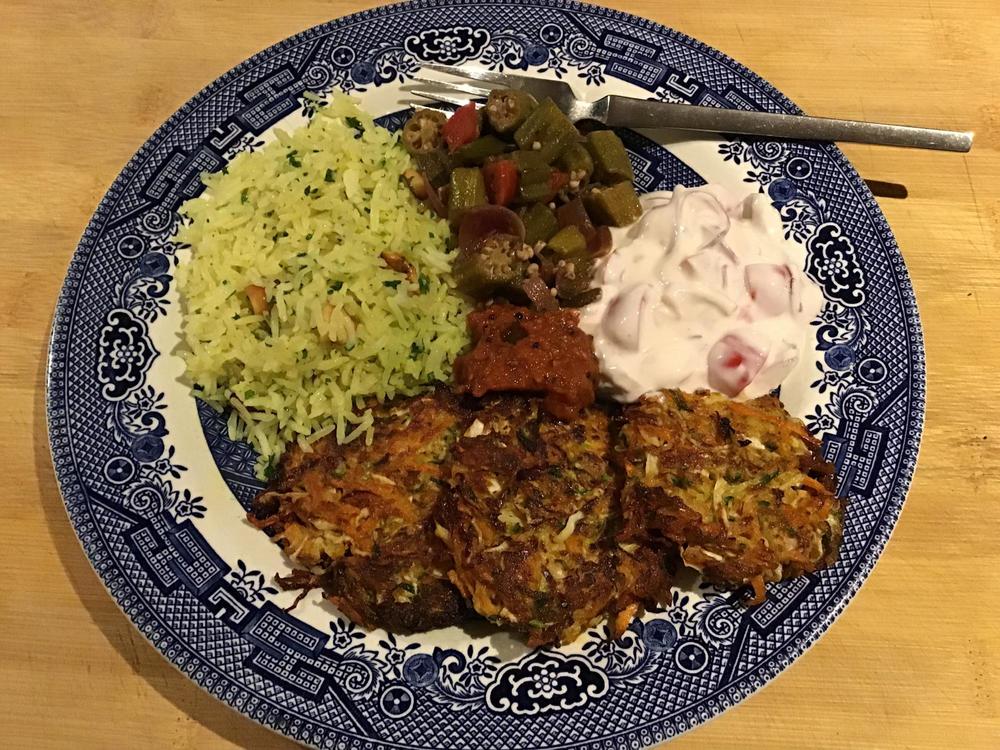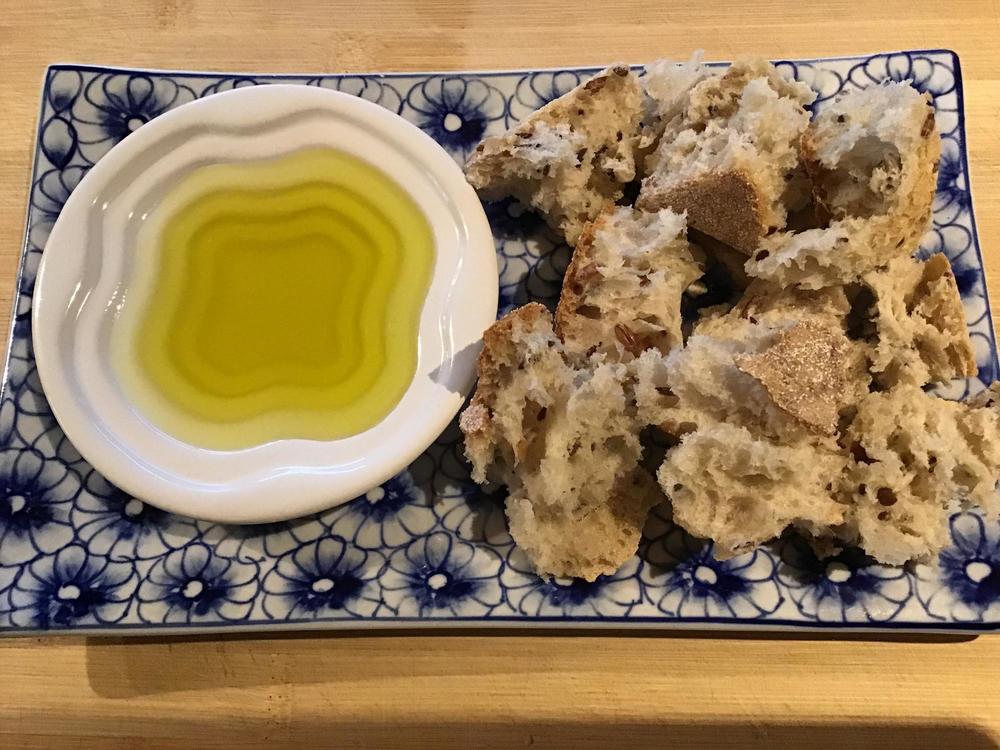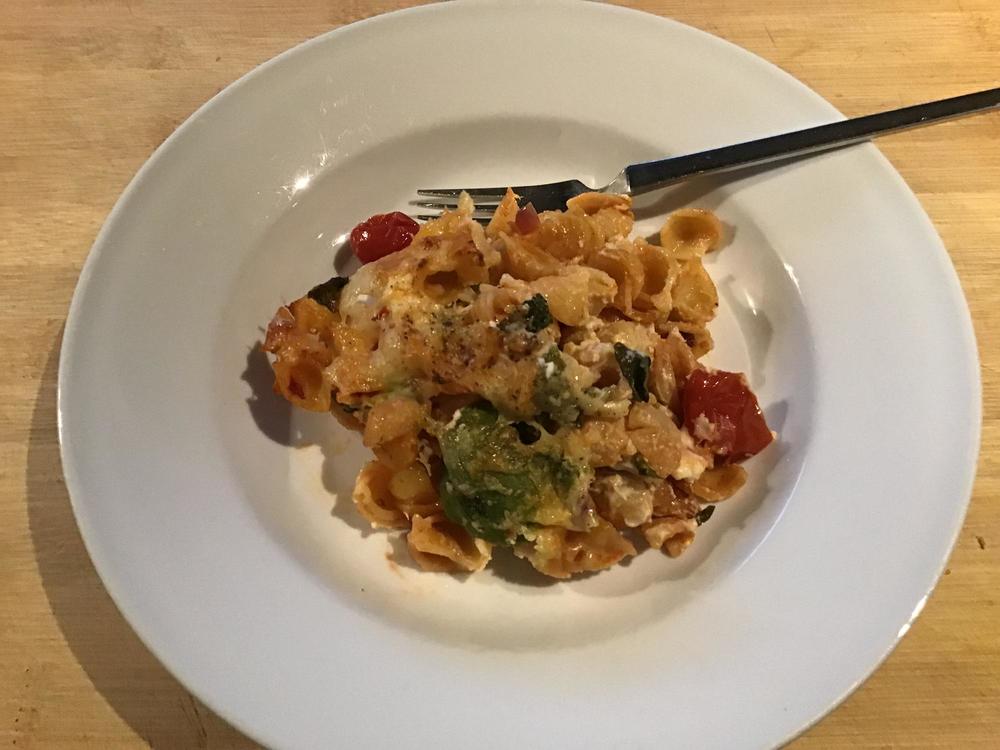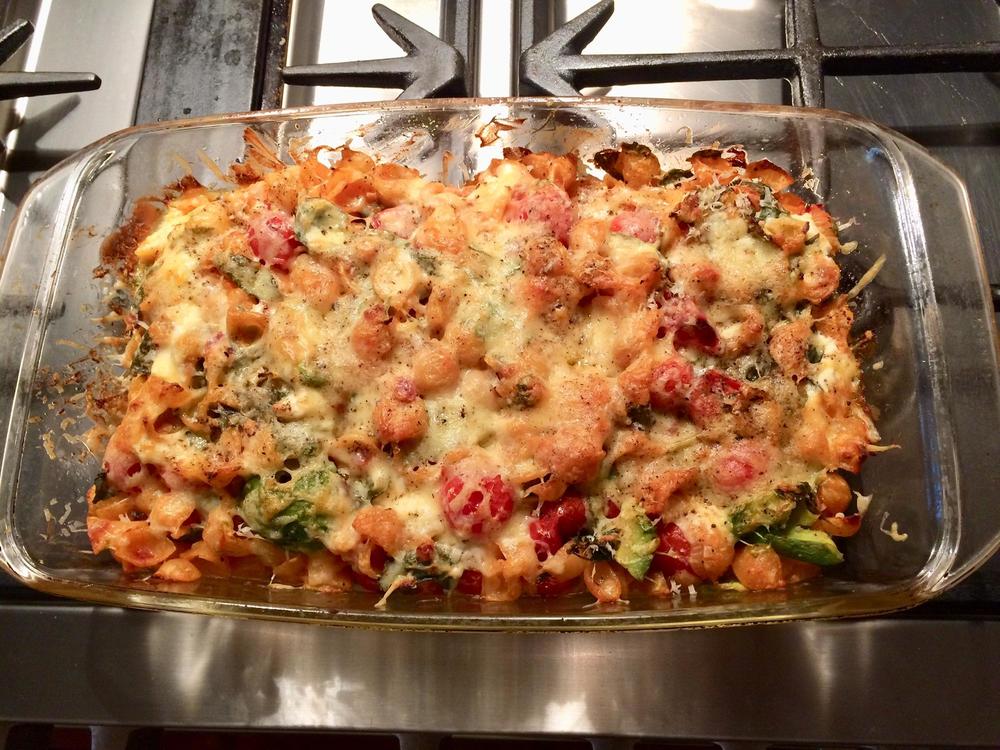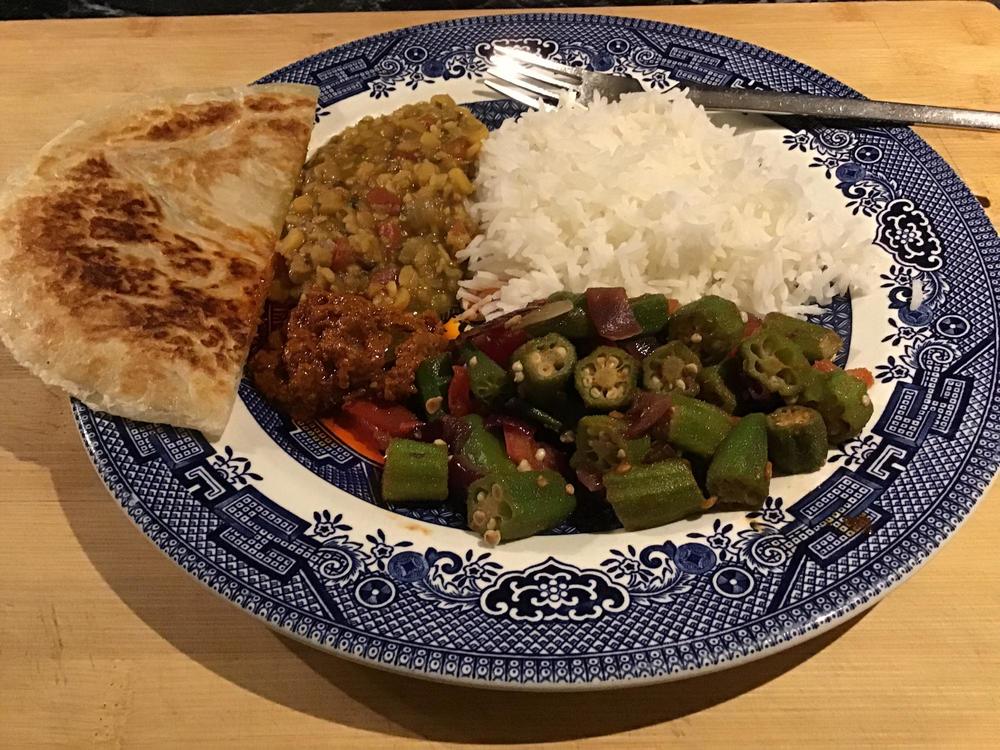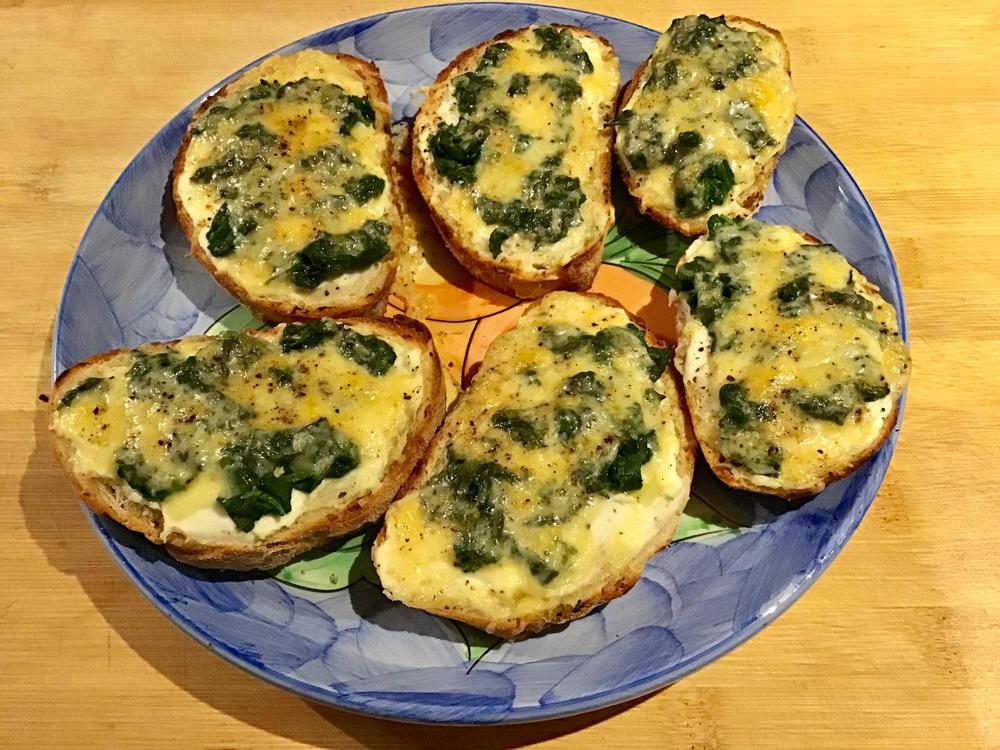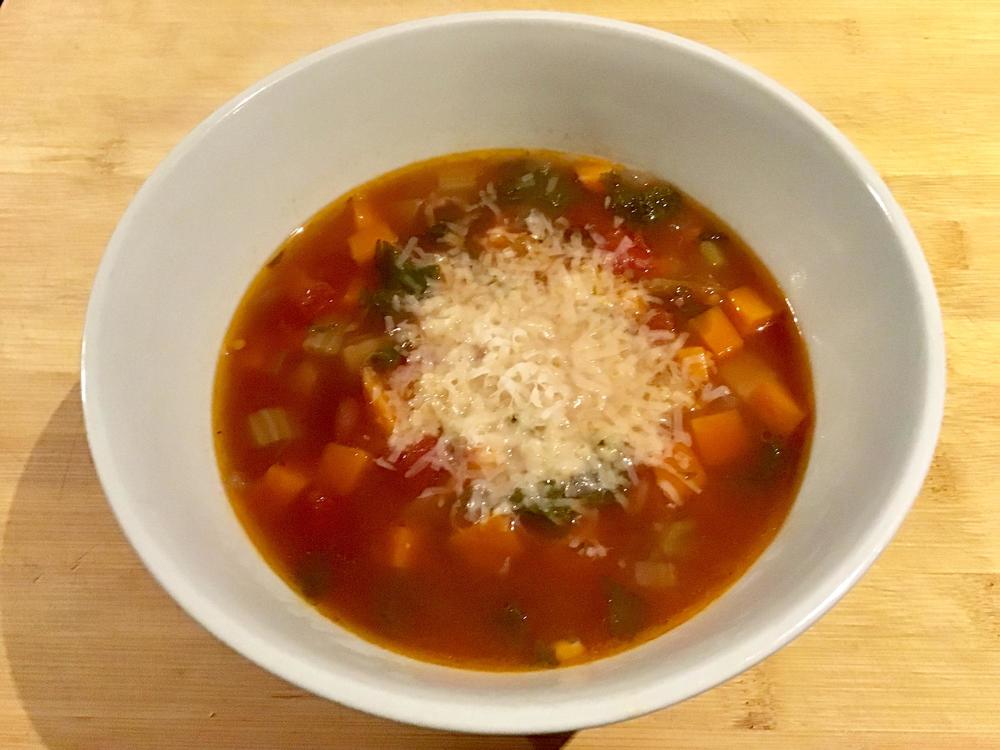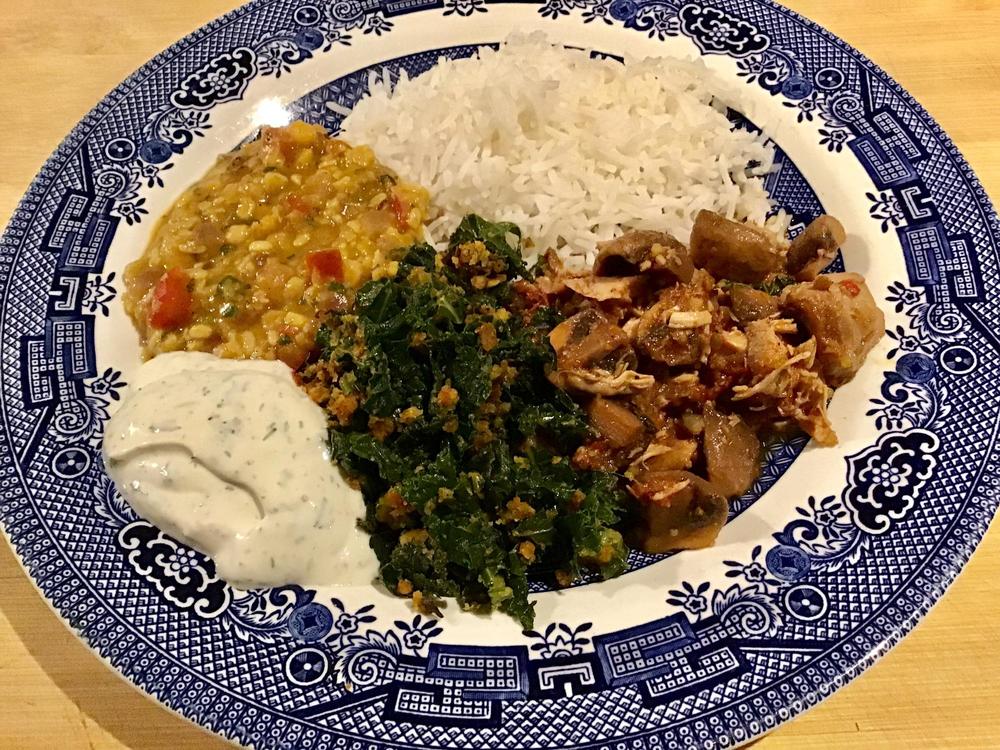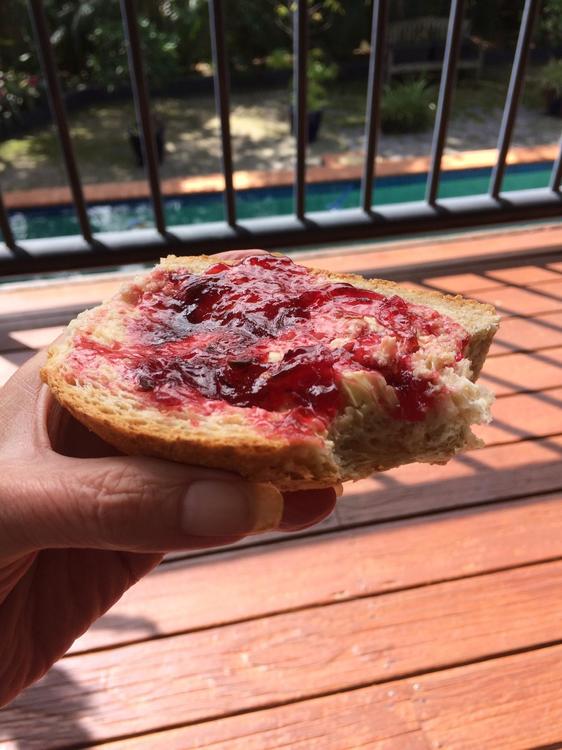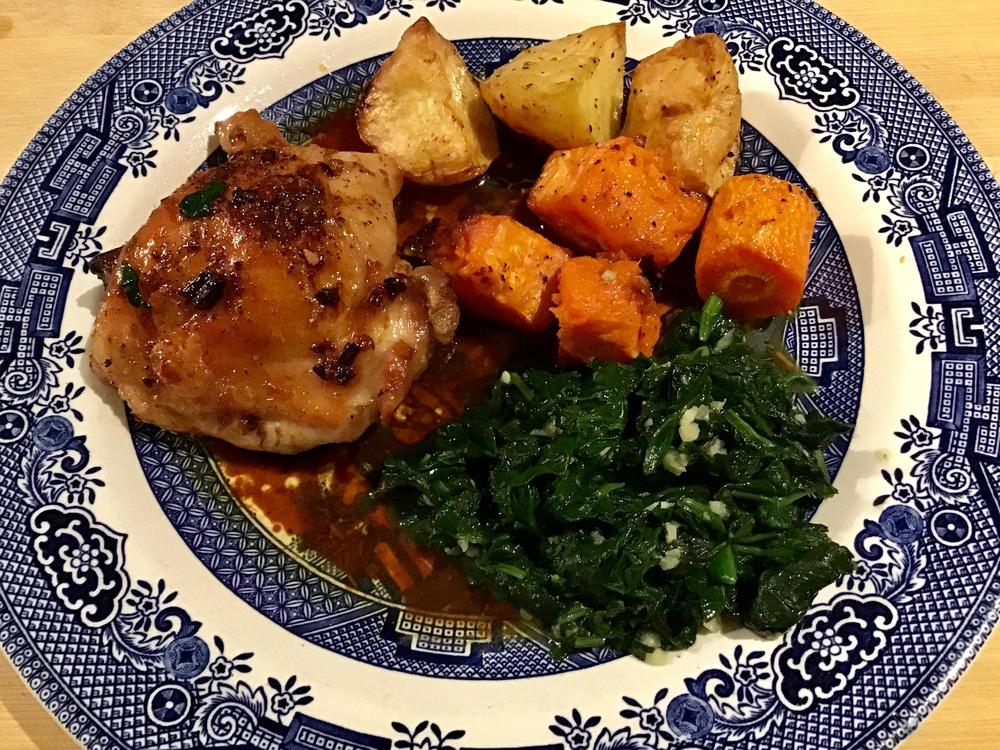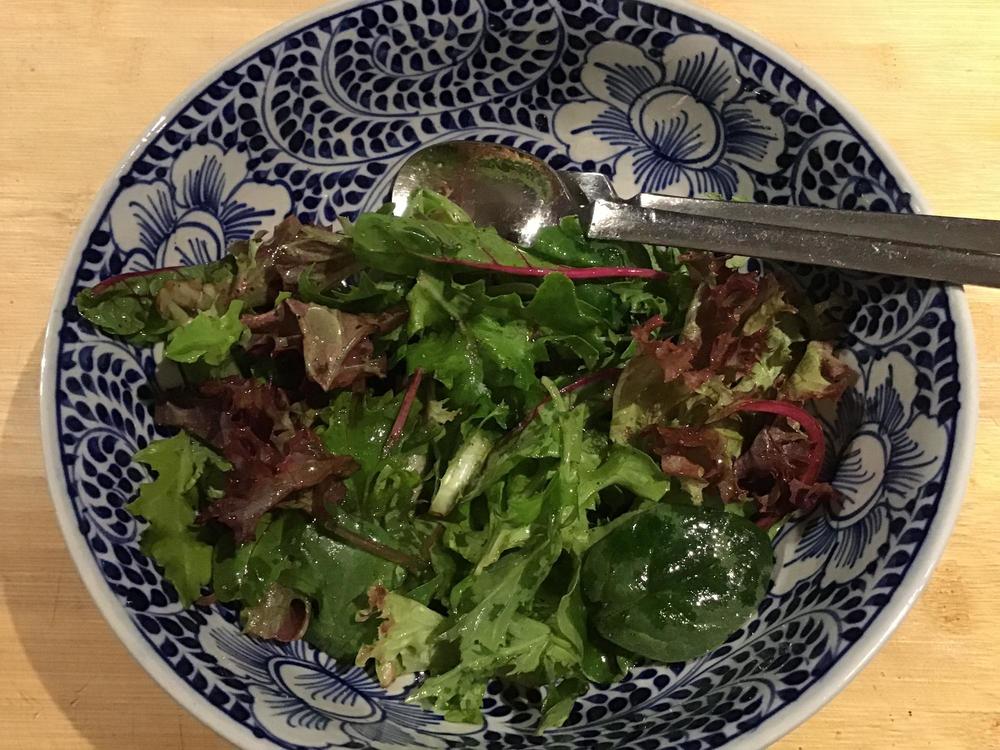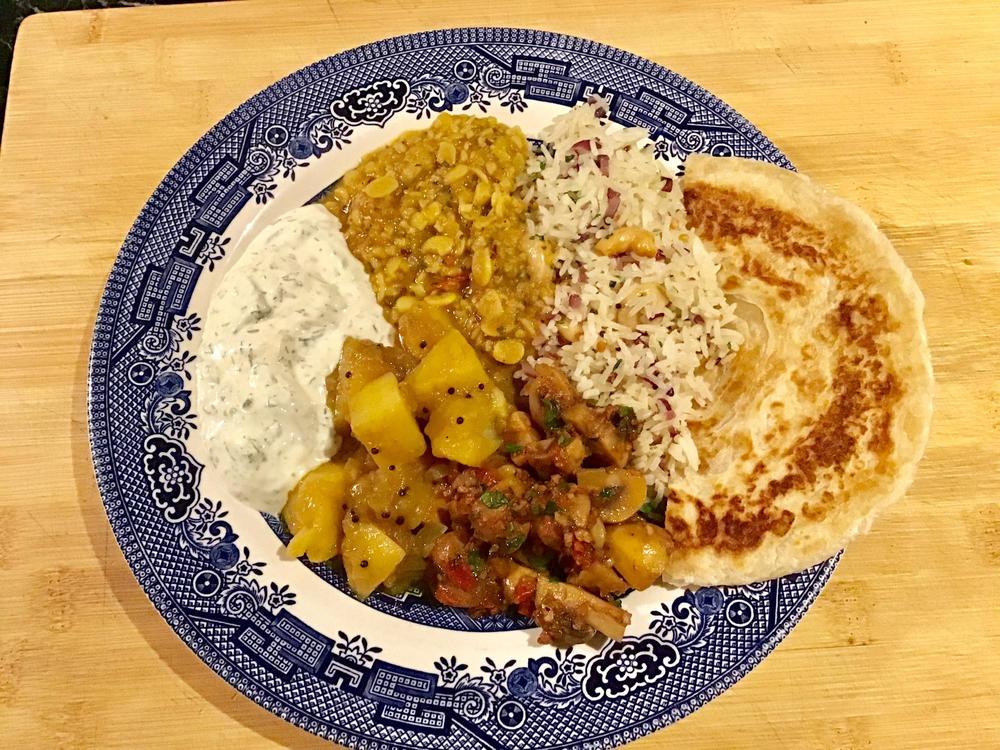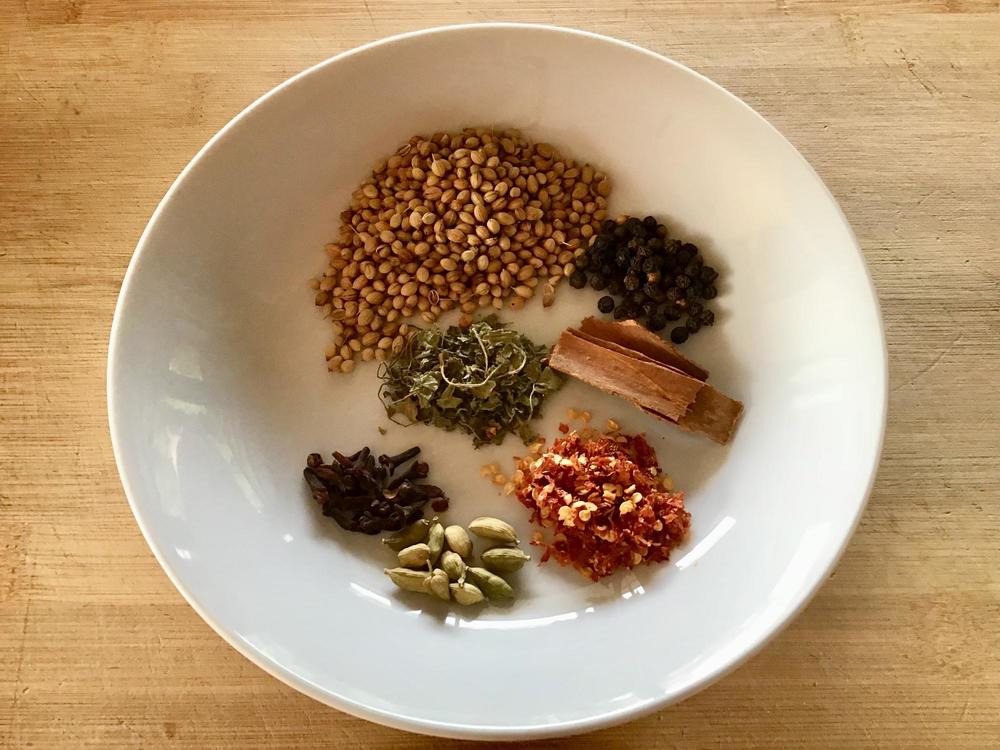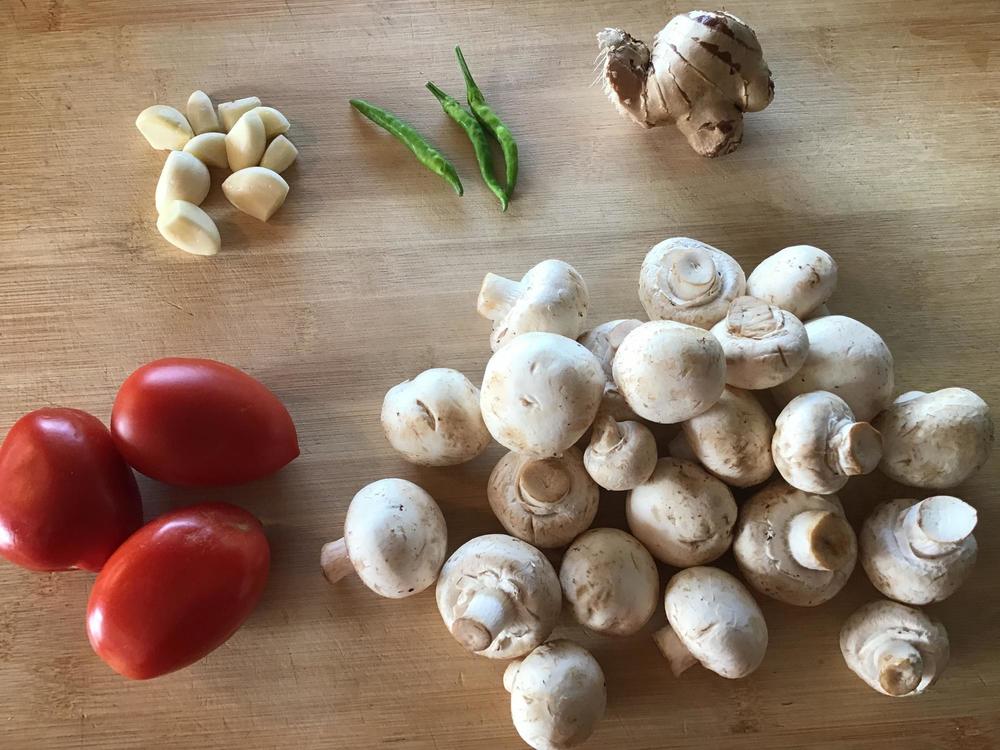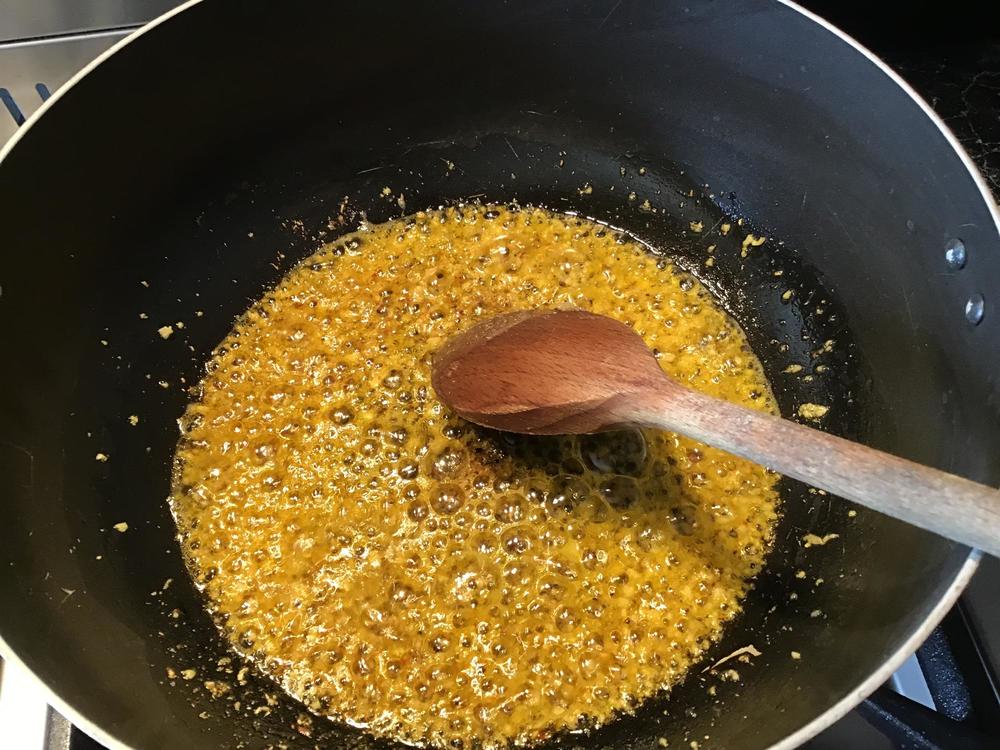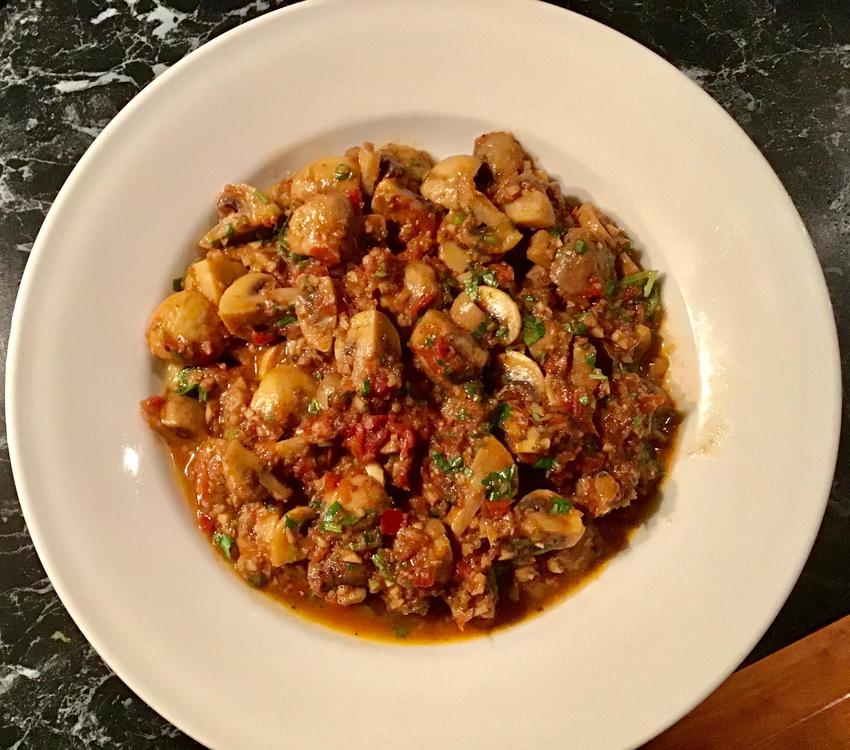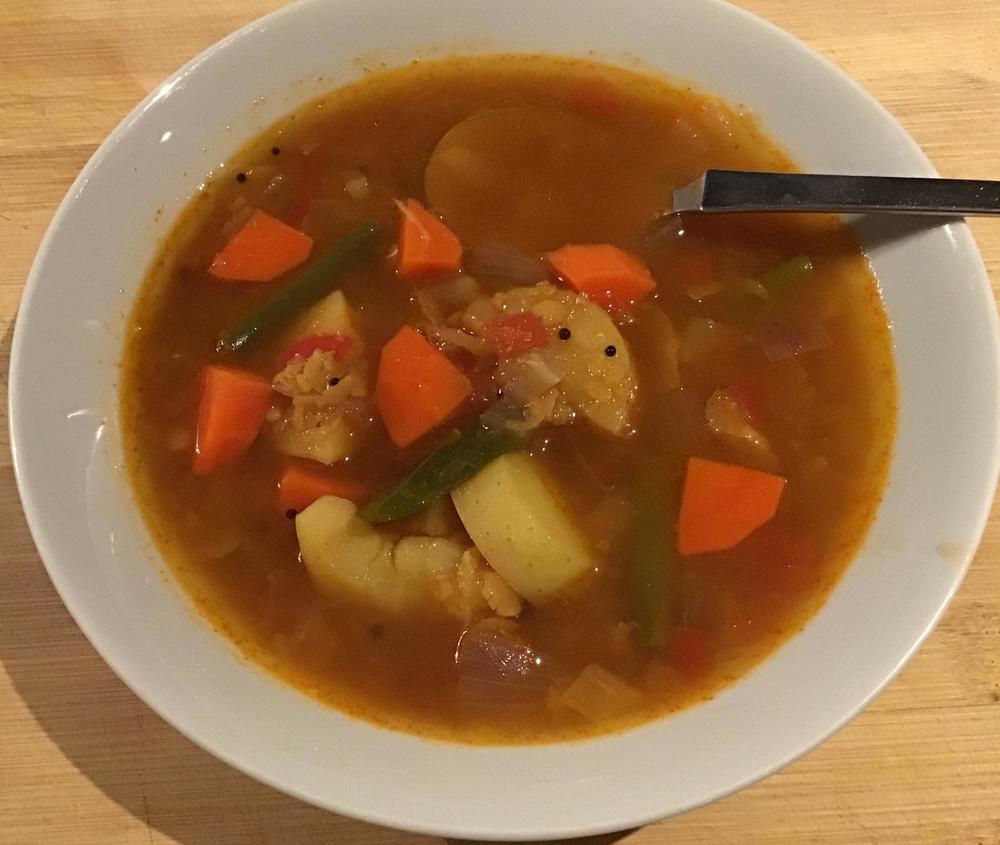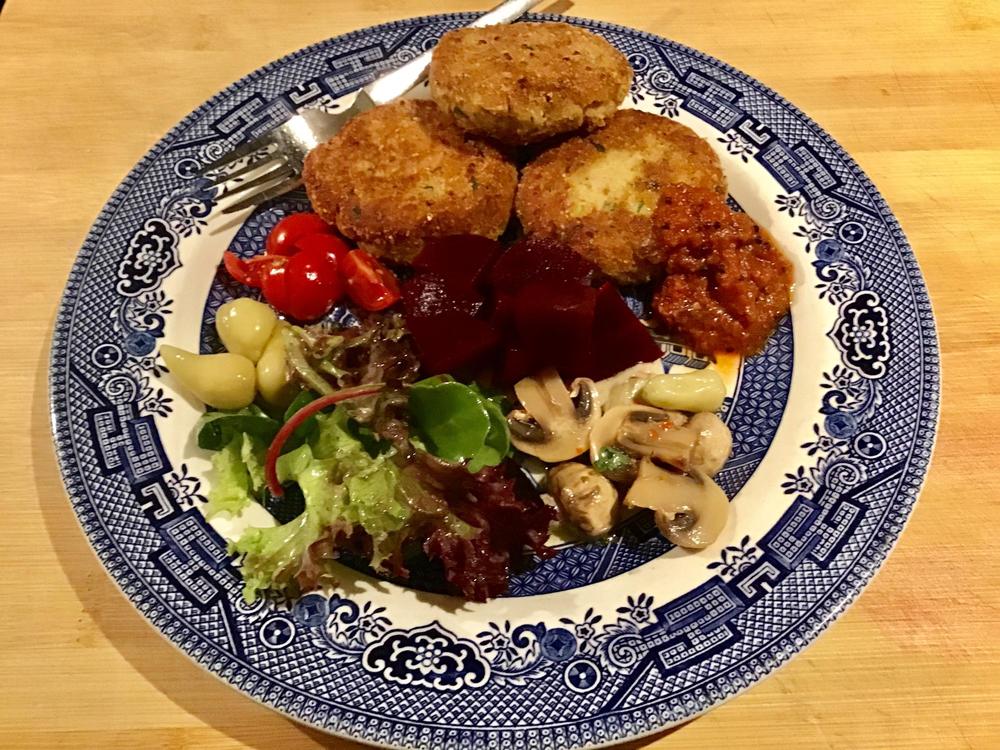-
Posts
1,491 -
Joined
-
Last visited
Content Type
Profiles
Forums
Store
Help Articles
Everything posted by sartoric
-
-
My easy veggie fritters, sort of pakora but not. I mix grated vegetables, in this case carrot, squeezed zucchini and shredded cabbage with spices, an egg and chickpea flour, then drop spoonfuls into a shimmering pan. Too easy. Served with a tomato and red onion raita, tomato chutney, lemon rice and okra.
-
@mm84321 what made it the greatest meal ever ? This is in Tokyo right ? Was it expensive ?
-
Ah, @rarerollingobject, I stumbled on this delicious story three years ago and thought “one of these days...”. Now that day is only three weeks away ! Thanks for the photos, a reread has given me some great ideas
-
Cherry tomato, avocado and ricotta pasta bake. Served with torn sourdough and a fruity extra virgin olive oil.
-
Pasta bake with small shells, a little sautéed onion and garlic, half a can of cherry tomatoes and a dozen or so halved fresh cherry tomatoes. This was all mixed together, dumped in the dish, enhanced with chunks of avocado, blobs of ricotta and torn basil, then finished with grated cheddar and parmesan.
- 134 replies
-
- 10
-

-

-
- Mexican
- Vegetarian
-
(and 1 more)
Tagged with:
-
I’ve never had beef drippings on toast, but I like Marmite and Promite too. As an Australian, I can be lynched for saying this, don’t tell anyone
-
-
Next time try getting a can of halved apricots in syrup, drain the syrup and roughly mash or purée the fruit. An Australian who grew up when this was the height of exotic cuisine. You’re welcome.
-
No @KennethT I buy them frozen and reheat in a tawa.
-
-
-
I tried an experiment last night, using leftover roast chicken from the previous night to boost a mushroom curry. It worked really well flavour wise, and upped the protein count too. On the plate with kale subzi (sautéed kale with chickpea flour crumbs) five lentil dal, a little yoghurt flavoured with roast cumin and dill, plus rice.
-
Ha ha, I got a bit sick of DH making jokes about finding feathers in the jam. @Smithy try searching under rozelle plants. They are a type of hibiscus, native to Africa but grow well here in frost free climates. We stopped last Saturday in a small town called Rathdowney, there’s a bakery which makes excellent pies and also a lone junk shop where I found a tripod for taking astral photos. Outside the shop a few people were clustered around a table with four pots of jam for sale....adding a pot of jam to my tripod purchase saved them from having to find change. The lady explained she had made the jam yesterday, went into great detail about peeling the rosellas (DH chuckling at the imagery) and said it was a good batch. She was right. Rosella is also a popular brand of tomato sauce here, the bottle features the distinctive red and blue parrot. Again though, no actual avian rosellas are contained within.
-
-
A tray bake with chicken thighs which had mingled for a while with chopped preserved lemon and oil from the jar. Potato, sweet potato and carrots to accompany plus garlic buttered spinach and a sauce made from pan drippings and the spinach water. This was very yummy and so easy.
-
-
My favourite pasta, broccoli anchovy with lots of garlic, a pinch of chilli, a splash of white wine and parmigiana regiano. Served with a mixed leave salad, simply dressed the Italian MIL way...salt, pepper, oil, red wine vinegar in that order, tossed.
-
I think it refers to the cast iron pot called a balti in which it used to be cooked, but also the flavours. Balti is frequently used in English recipe books/restaurants.
-
Indian again ! Yesterday I made a mushroom curry (details on the curry cook off thread) and served it with leftover dal, leftover potato masala, a fresh raita with cucumber, dill and roasted cumin powder, plus ghee cashew rice and paratha.
-
Seeing you were so nice about it @Smithy, here’s another one. Balti mushroom curry. These spices are ground together in the spice grinder, coriander seeds, peppercorns, cinnamon bark, chilli flakes, cardamom pods, cloves, dried fenugreek leaves. You get a curry curry powder like this. The other ingredients are garlic, green chilli, ginger, tomato and mushrooms, so simple. I fry fry off the garlic for a minute, then add a tbs of the powder and stir for a couple minutes. The tomatoes go in next and cook for five minutes or so until quite mushy. Add the quartered mushrooms, salt to taste and cook covered until they reach your desired tenderness. Garnish with chopped coriander. I often add a few handfuls of baby spinach too. The plated meal is over on the dinner thread.
-
Drumstick sambhar (in deference to he who doesn’t like to “deal” with food on his plate, all the drumsticks have been scraped of flesh and skins discarded) with carrots, beans and potato. Served with masala dosa, fresh tomato chutney and coconut sambol.
-
Eggplant lasagna with a greek salad. At last we’re getting some autumn weather, it’s cool enough to turn the oven on, yay.
-
Dinner last night was tuna patties, oh how I love thee with fresh tomato chutney. Still damn hot here, so served with salad things, pickled mushrooms, pickled chilli, beetroot, balsamic tomatoes and a few green leaves.
-
Dinner last night was a new to me dal (details on the curry cook off thread) leftover drumstick and potato curry, leftover okra and fresh rice with pickle. I spoke to my Indian grocer friend during the week about drumstick vegetable. You never get the skin tender, it’s meant to have the flesh scraped off after cooking. Now that I know, I’ll definitely use it again. A fantastic flavour hard to describe. Funny how they look like okra on steroids.




